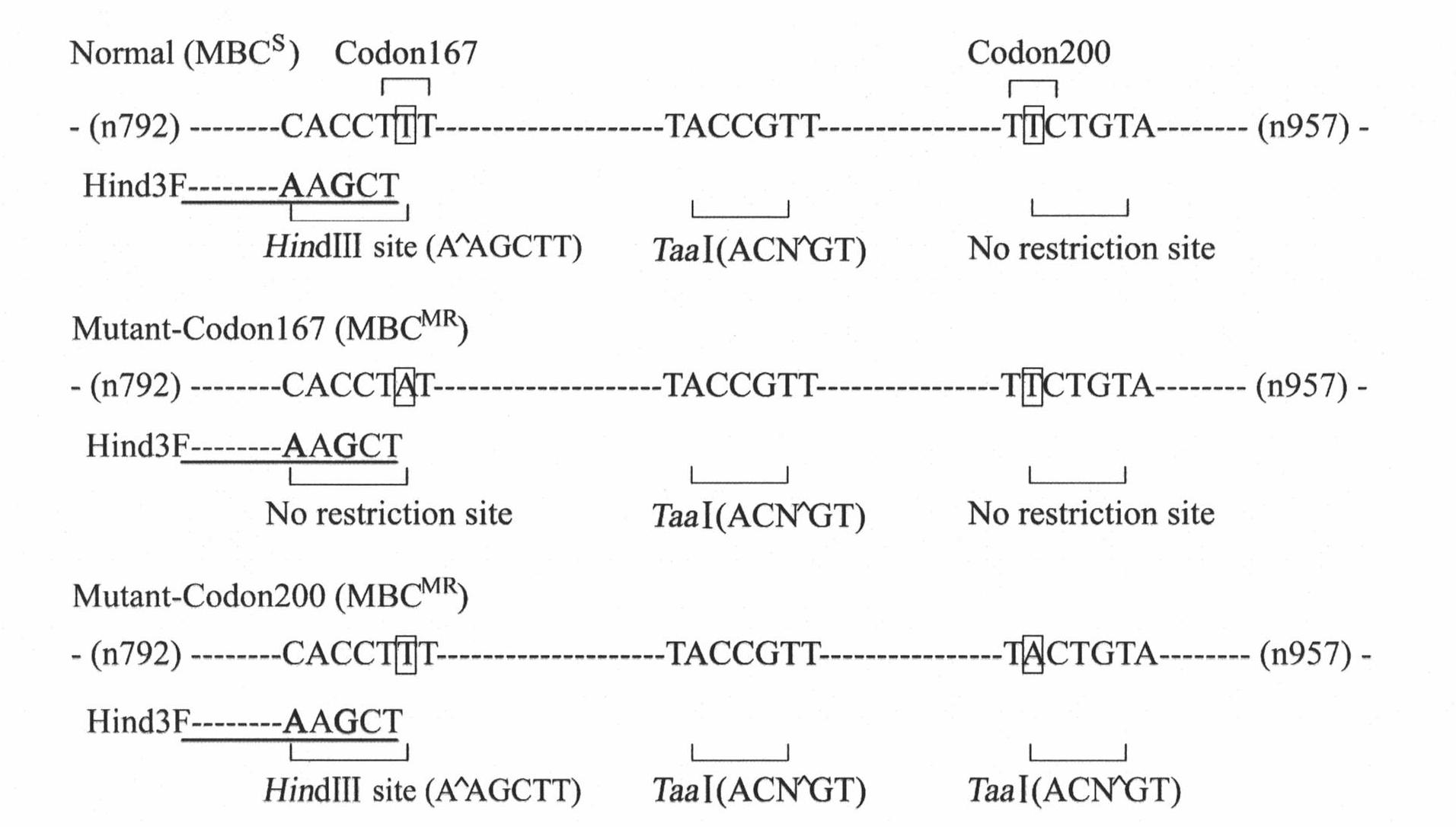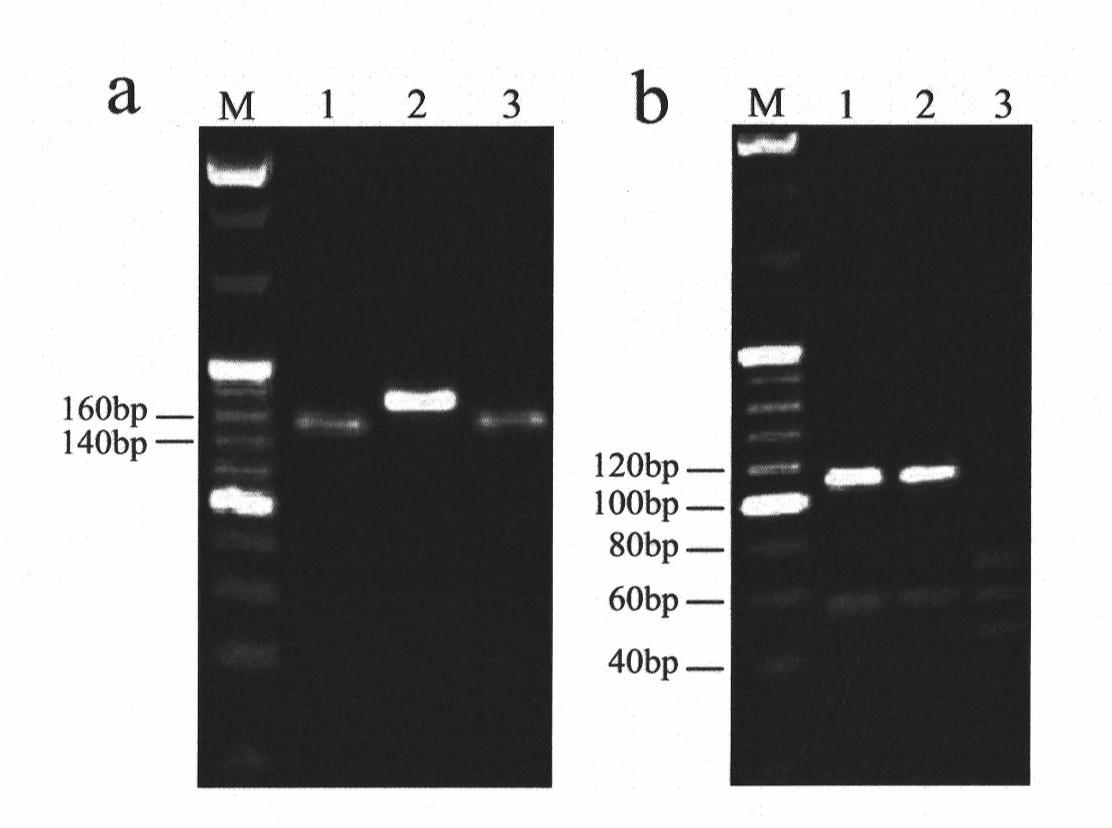Molecule detection method of Fusarium graminearum to medium resistance level bacterial strain of carbendazim
A technology of molecular detection of Fusarium graminearum, applied in the field of epidemic prediction of drug-resistant wheat head blight, can solve problems such as failure of chemical control, achieve the effects of controlling drug resistance, reducing environmental pollution, and reducing costs
- Summary
- Abstract
- Description
- Claims
- Application Information
AI Technical Summary
Problems solved by technology
Method used
Image
Examples
Embodiment 1
[0083] Embodiment 1, be applicable to the annealing temperature in PIRA-PCR technique
[0084] During the PCR reaction, the annealing temperature Tm value is an important guarantee for the normal progress and specificity of the reaction. If the annealing temperature is too low, non-specific amplification will occur. Referring to the Tm values of the inner and outer primers, we carried out gradient PCR from 50°C to 65°C, and determined that the optimal annealing temperature of the outer primers was 58°C, and the optimal annealing temperature of the inner primers was 56°C.
Embodiment 2
[0085] Example 2, detection of known resistance levels and genotype strains
[0086] Extract bacterial strain ZF43, ZF52, NT-7 (Table 1) genomic DNA, amplify with internal and external primers, obtain amplification pattern ( figure 1 ). The amplified products were digested with HindIII and TaaI respectively, see the restriction map image 3 , the test results are consistent with the theoretical results ( figure 2 ).
Embodiment 3
[0087] Embodiment 3, Jiangsu field strain detection
[0088] Fifty strains of Gibberella tritici were randomly selected from wheat fields in Jiangsu Province, and their resistance to carbendazim was detected by traditional colony diameter method and PIRA-PCR, respectively, and 3 strains were randomly selected from various genotype strains according to the results of PIRA-PCR detection. for sequencing verification.
[0089] The results are shown in Table 2. The results of the two methods for detecting drug resistance are completely consistent. Compared with the traditional colony diameter method, primer-introduced restriction endonuclease analysis polymerase chain reaction (PIRA-PCR) only takes a few hours to complete the detection, which is simple, fast and accurate; it can also detect mutations Point SNP analysis, accurate typing. However, the traditional colony diameter method takes about two weeks from isolation and culture to detection. The PIRA-PCR typing results are s...
PUM
 Login to View More
Login to View More Abstract
Description
Claims
Application Information
 Login to View More
Login to View More - R&D Engineer
- R&D Manager
- IP Professional
- Industry Leading Data Capabilities
- Powerful AI technology
- Patent DNA Extraction
Browse by: Latest US Patents, China's latest patents, Technical Efficacy Thesaurus, Application Domain, Technology Topic, Popular Technical Reports.
© 2024 PatSnap. All rights reserved.Legal|Privacy policy|Modern Slavery Act Transparency Statement|Sitemap|About US| Contact US: help@patsnap.com










